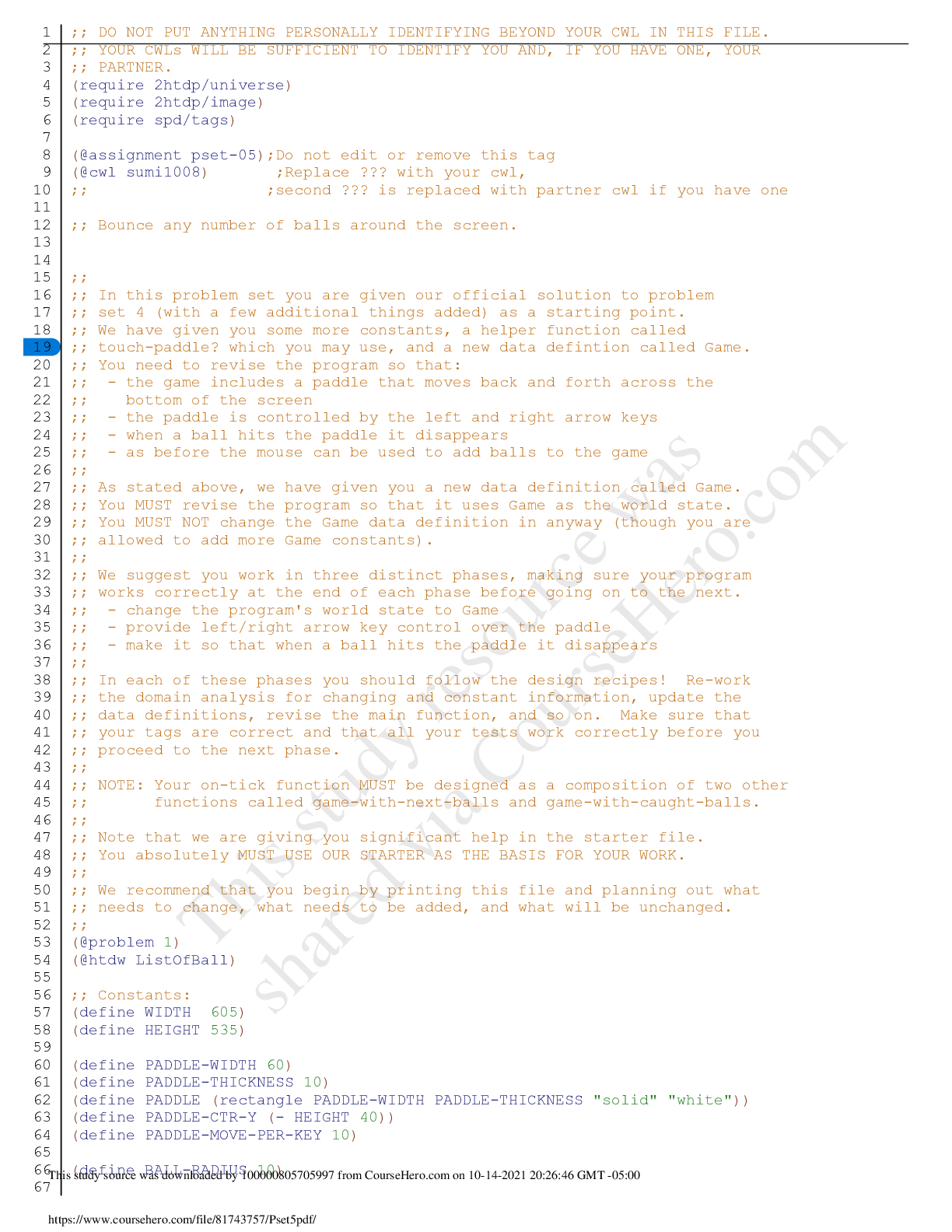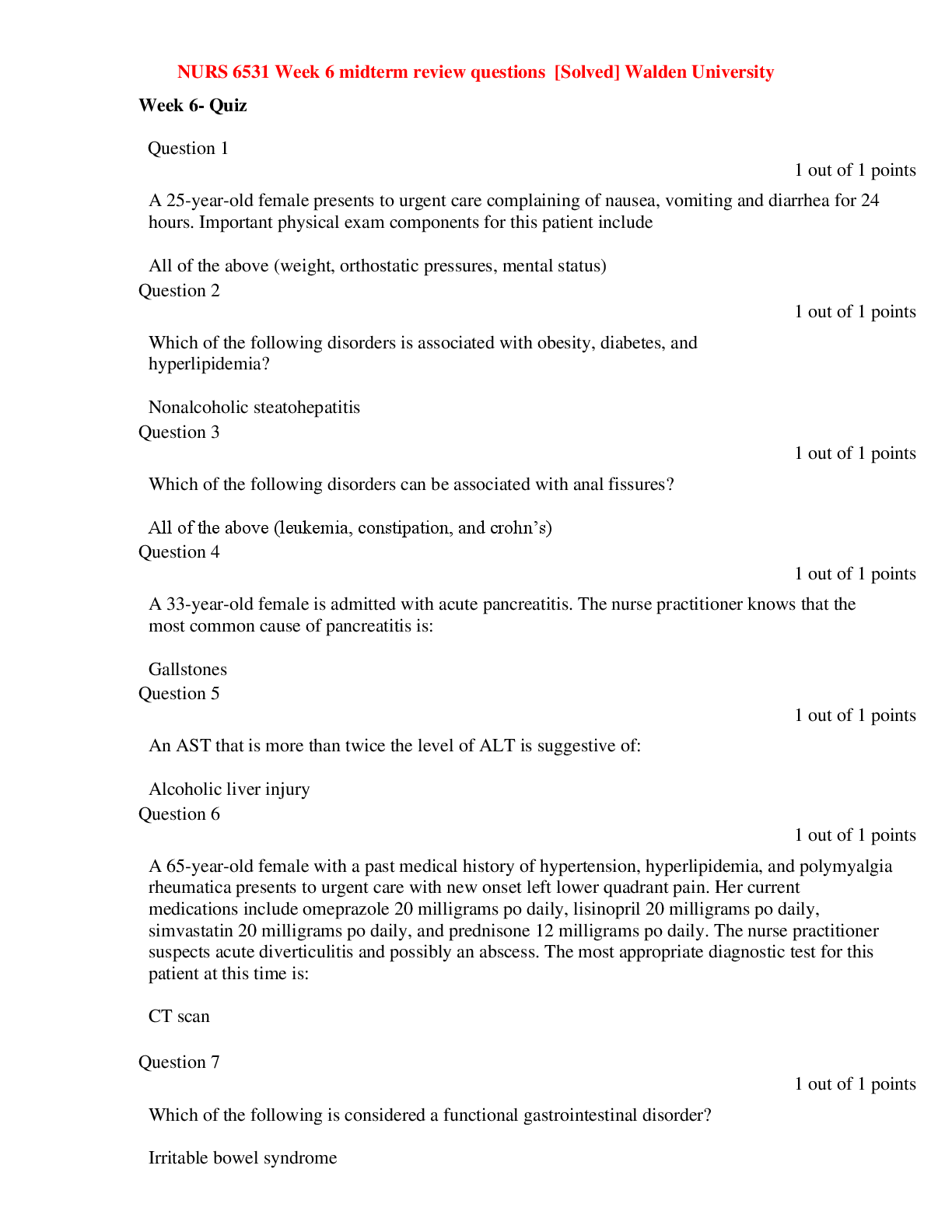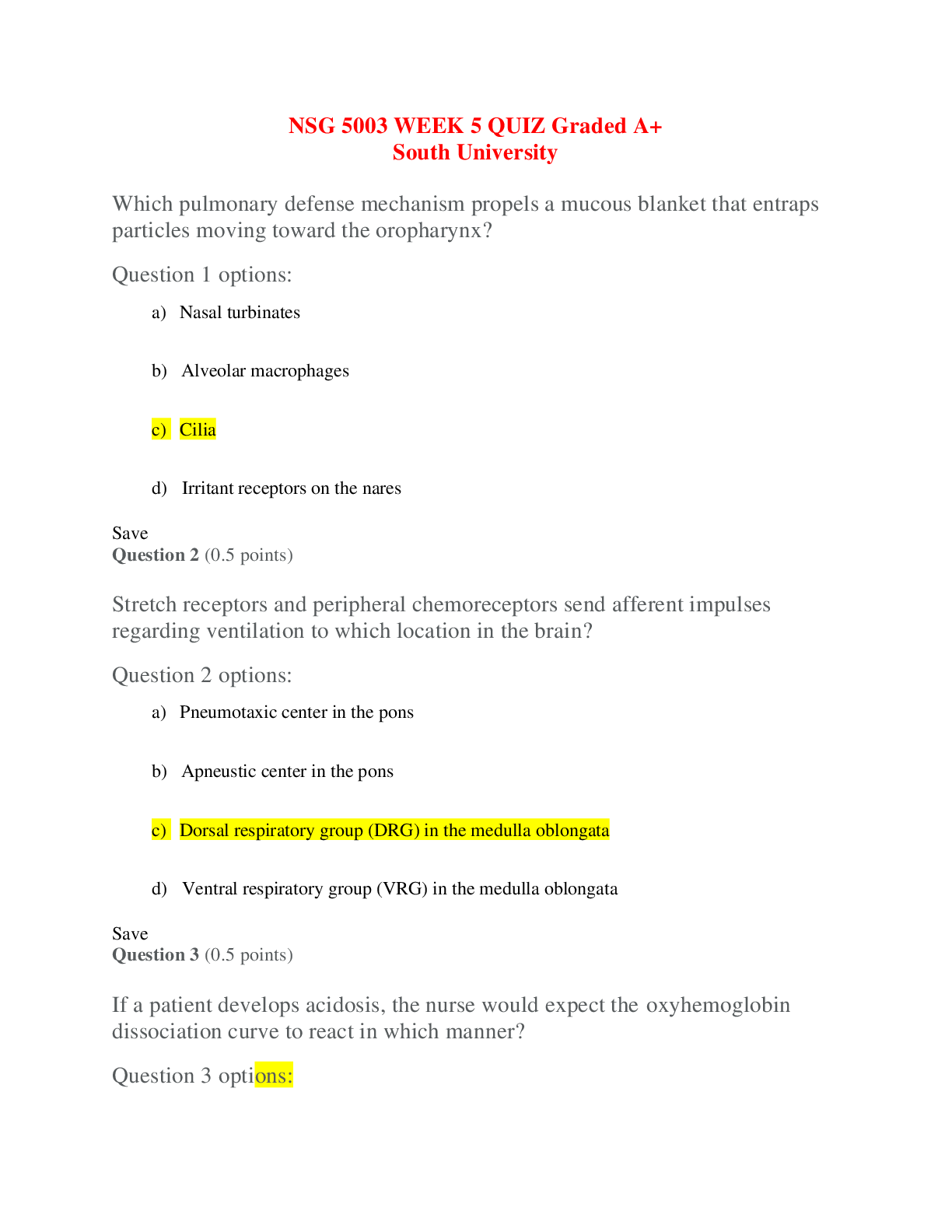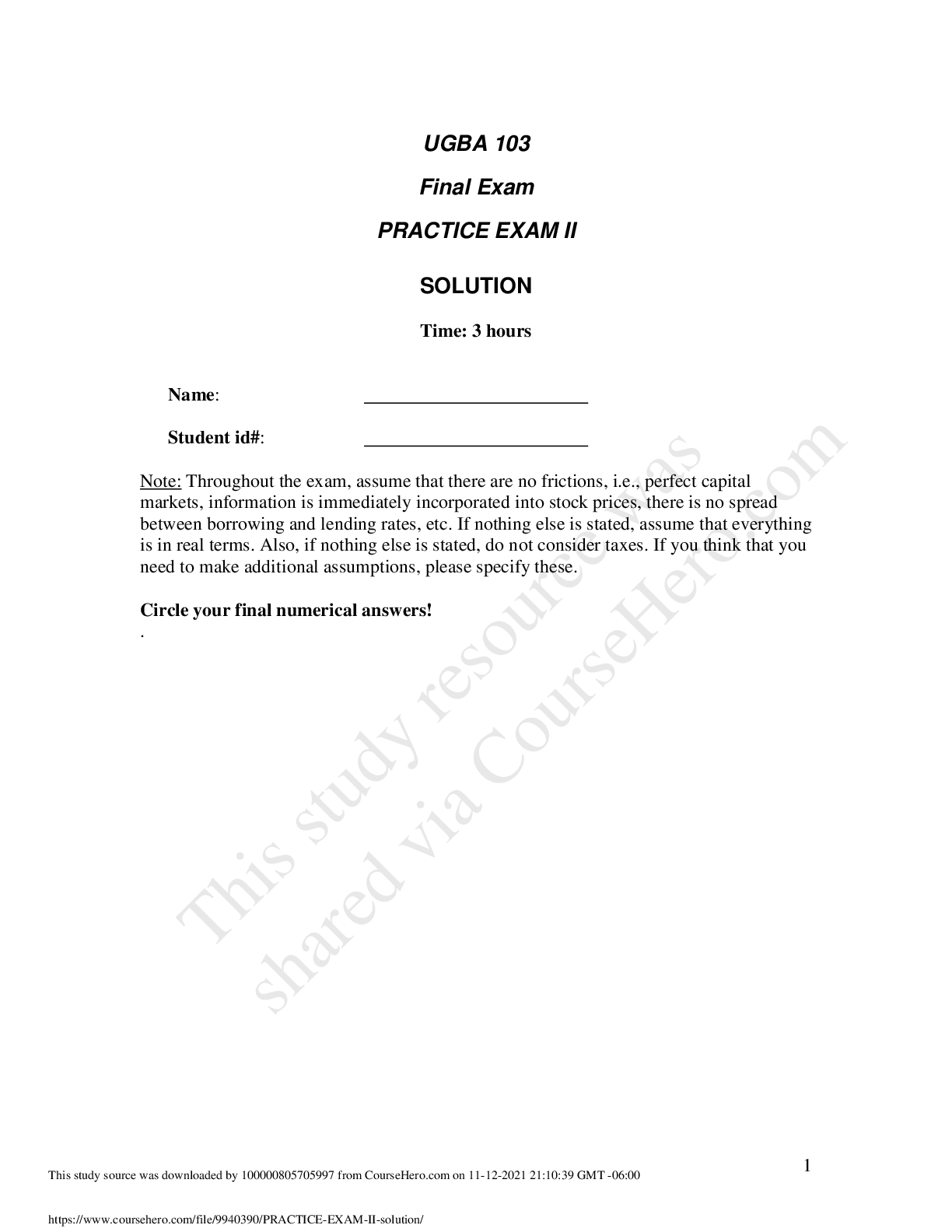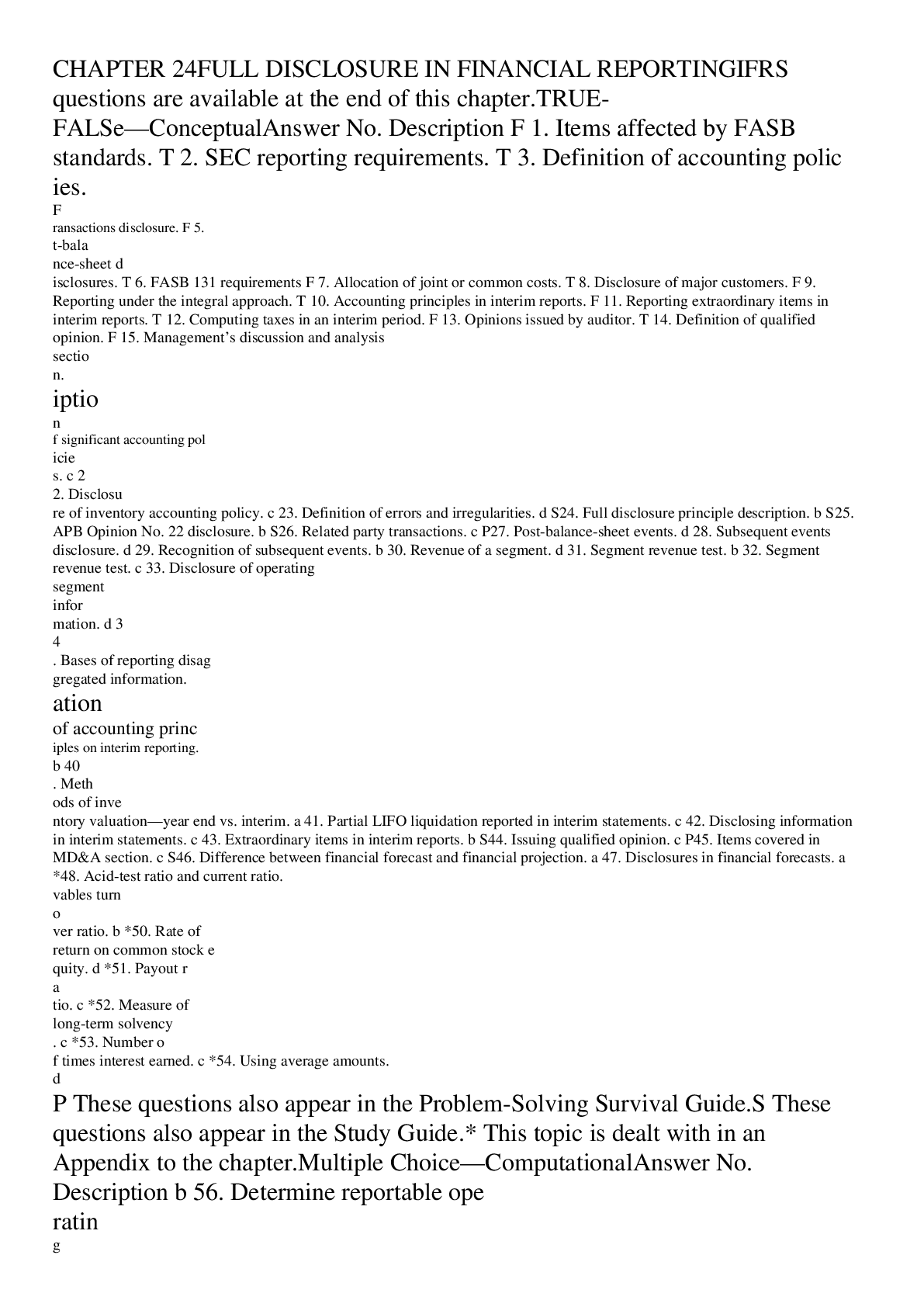Education > QUESTIONS & ANSWERS > Test Bank CHAPTER 24 FULL DISCLOSURE IN FINANCIAL REPORTING (All)
Test Bank CHAPTER 24 FULL DISCLOSURE IN FINANCIAL REPORTING
Document Content and Description Below
Test Bank CHAPTER 24 FULL DISCLOSURE IN FINANCIAL REPORTING CHAPTER 24 FULL DISCLOSURE IN FINANCIAL REPORTING IFRS questions are available at the end of this chapter. T... RUE-FALSE—Conceptual Description F 1. Items affected by FASB standards. T 2. SEC reporting requirements. T 3. Definition of accounting policies. F 4. Related party transactions disclosure. F 5. Post-balance-sheet disclosures. T 6. FASB 131 requirements F 7. Allocation of joint or common costs. T 8. Disclosure of major customers. F 9. Reporting under the integral approach. T 10. Accounting principles in interim reports. F 11. Reporting extraordinary items in interim reports. T 12. Computing taxes in an interim period. F 13. Opinions issued by auditor. T 14. Definition of qualified opinion. F 15. Management’s discussion and analysis section. T 16. Information provided by MD&A section. F 17. Definition of financial projection. T 18. Financial forecast vs. financial projection. T 19. Fraudulent financial reporting. F 20. Internal environment influences. MULTIPLE CHOICE—Conceptual Description d 21. Disclosure of significant accounting policies. c 22. Disclosure of inventory accounting policy. c 23. Definition of errors and irregularities. d S24. Full disclosure principle description. b S25. APB Opinion No. 22 disclosure. b S26. Related party transactions. c P27. Post-balance-sheet events. d 28. Subsequent events disclosure. d 29. Recognition of subsequent events. b 30. Revenue of a segment. d 31. Segment revenue test. b 32. Segment revenue test. c 33. Disclosure of operating segment information. d 34. Bases of reporting disaggregated information. a S35. Items reconciled in segment reporting. d S36. Accounting principles used in interim reports. a P37. Planned volume variance in interim period. d 38. Interim financial reporting. MULTIPLE CHOICE—Conceptual (cont.) Description d 39. Application of accounting principles on interim reporting. b 40. Methods of inventory valuation—year end vs. interim. a 41. Partial LIFO liquidation reported in interim statements. c 42. Disclosing information in interim statements. c 43. Extraordinary items in interim reports. b S44. Issuing qualified opinion. c P45. Items covered in MD&A section. c S46. Difference between financial forecast and financial projection. a 47. Disclosures in financial forecasts. a *48. Acid-test ratio and current ratio. b *49. Receivables turnover ratio. b *50. Rate of return on common stock equity. d *51. Payout ratio. c *52. Measure of long-term solvency. c *53. Number of times interest earned. c *54. Using average amounts. d *55. Limitations of ratio analysis. P These questions also appear in the Problem-Solving Survival Guide. S These questions also appear in the Study Guide. * This topic is dealt with in an Appendix to the chapter. MULTIPLE CHOICE—Computational Description b 56. Determine reportable operating segments. c 57. Bonus expense in first quarter interim income statement. a 58. Property taxes and plant repairs recognized in interim period. c 59. Inventory loss reflected in interim statements. d *60. Calculate the current ratio. c *61. Calculate the number of times interest was earned. d *62. Calculate book value per share of common stock. c *63. Calculate rate of return on common stock equity. c *64. Calculate receivables turnover. d *65. Calculate inventory turnover. b *66. Calculate the profit margin on sales. c *67. Calculate the rate of return on common stock equity. a *68. Determine book value per share. a *69. Calculate the acid-test ratio. c *70. Calculate the acid-test ratio. c *71. Receivables turnover. c *72. Calculate inventory turnover. MULTIPLE CHOICE—CPA Adapted Description c 73. Significant accounting policies disclosed for plant assets. c 74. Criteria for reporting disaggregated information. b 75. Identification of reportable segments. b 76. Identification of a reportable segment. b 77. Advertising costs—year end vs. interim reporting. c 78. Total expense to be reported in interim statements. b 79. Extraordinary loss reported in interim statements. c 80. Extraordinary gain reported in interim statements. c *81. Acid-test ratio and inventory turnover ratio. d *82. Acid-test ratio and debt to total assets ratio. c *83. Receivables turnover and payout ratio. EXERCISES Item Description E24-84 Notes to financial statements. E24-85 Segment reporting. E24-86 Segment reporting. E24-87 Interim reports. E24-88 Inventory and cost of goods sold at interim dates. E24-89 Forecasts. *E24-90 Financial statement analysis. *E24-91 Selected financial ratios. *E24-92 Computation of selected ratios. PROBLEMS Item Description P24-93 Segment Reporting. P24-94 Interim Reports. CHAPTER LEARNING OBJECTIVES 1. Review the full disclosure principle and describe implementation problems. 2. Explain the use of notes in financial statement preparation. 3. Discuss the disclosure requirements for major business segments. 4. Describe the accounting problems associated with interim reporting. 5. Identify the major disclosures in the auditor's report. 6. Understand management’s responsibilities for financials. 7. Identify issues related to financial forecasts and projections. 8. Describe the profession's response to fraudulent financial reporting. *9. Understand the approach to financial statement analysis. *10. Identify major analytic ratios and describe their calculation. *11. Explain the limitations of ratio analysis. SUMMARY OF LEARNING OBJECTIVES BY QUESTIONS Item Type Item Type Item Type Item Type Item Type Item Type Item Type Learning Objective 1 1. TF 2. TF 21. MC 22. MC 23. MC S24. MC Learning Objective 2 3. TF 5. TF S26. MC 28. MC 73. MC 4. TF S25. MC P27. MC 29. MC 84. E Learning Objective 3 6. TF 30. MC 33. MC 56. MC 76. MC 93. P 7. TF 31. MC 34. MC 74. MC 85. E 8. TF 32. MC S35. MC 75. MC 86. E Learning Objective 4 9. TF S36. MC 40. MC 57. MC 78. MC 88. E 10. TF P37. MC 41. MC 58. MC 79. MC 94. P 11. TF 38. MC 42. MC 59. MC 80. MC 12. TF 39. MC 43. MC 77. MC 87. E Learning Objective 5 13. TF 14. TF 15. TF 16. TF S44. MC Learning Objective 6 P45. MC Learning Objective 7 17. TF 18. TF S46. MC 47. MC 89. E Learning Objective 8 19. TF 20. TF Learning Objective 10 48. MC 52. MC 61. MC 65. MC 69. MC 81. MC 91. E 49. MC 53. MC 62. MC 66. MC 70. MC 82. MC 92. E 50. MC 54. MC 63. MC 67. MC 71. MC 83. MC 51. MC 60. MC 64. MC 68. MC 72. MC 90. E Learning Objective 11 55. MC Note: TF = True-False MC = Multiple Choice E = Exercise P = Problem TRUE-FALSE—Conceptual 1. FASB standards directly affect financial statements, notes to the financial statements, and management’s discussion and analysis. 2. The SEC requires that companies report to it certain substantive information that is not found in their annual reports. 3. Accounting policies are the specific accounting principles and methods a company uses and considers most appropriate to present fairly its financial statements. 4. In order to make adequate disclosure of related party transactions, companies should report the legal form, rather than the economic substance, of these transactions. 5. If the loss on an account receivable results from a customer’s bankruptcy after the balance sheet date, the company only discloses this information in the notes to the financial statements. 6. FASB Statement 131 requires that general purpose financial statements include selected information on a single basis of segmentation. 7. The FASB requires allocations of joint, common, or company-wide costs for external reporting purposes. 8. If 10 percent or more of company revenue is derived from a single customer, the company must disclose the total amount of revenue from each such customer by segment. 9. Companies should report accounting transactions as they occur, and expense recognition should not change with the period of time covered under the integral approach. 10. [Show More]
Last updated: 2 years ago
Preview 1 out of 22 pages
.png)
Buy this document to get the full access instantly
Instant Download Access after purchase
Buy NowInstant download
We Accept:

Reviews( 0 )
$12.00
Can't find what you want? Try our AI powered Search
Document information
Connected school, study & course
About the document
Uploaded On
Nov 04, 2020
Number of pages
22
Written in
Additional information
This document has been written for:
Uploaded
Nov 04, 2020
Downloads
0
Views
67


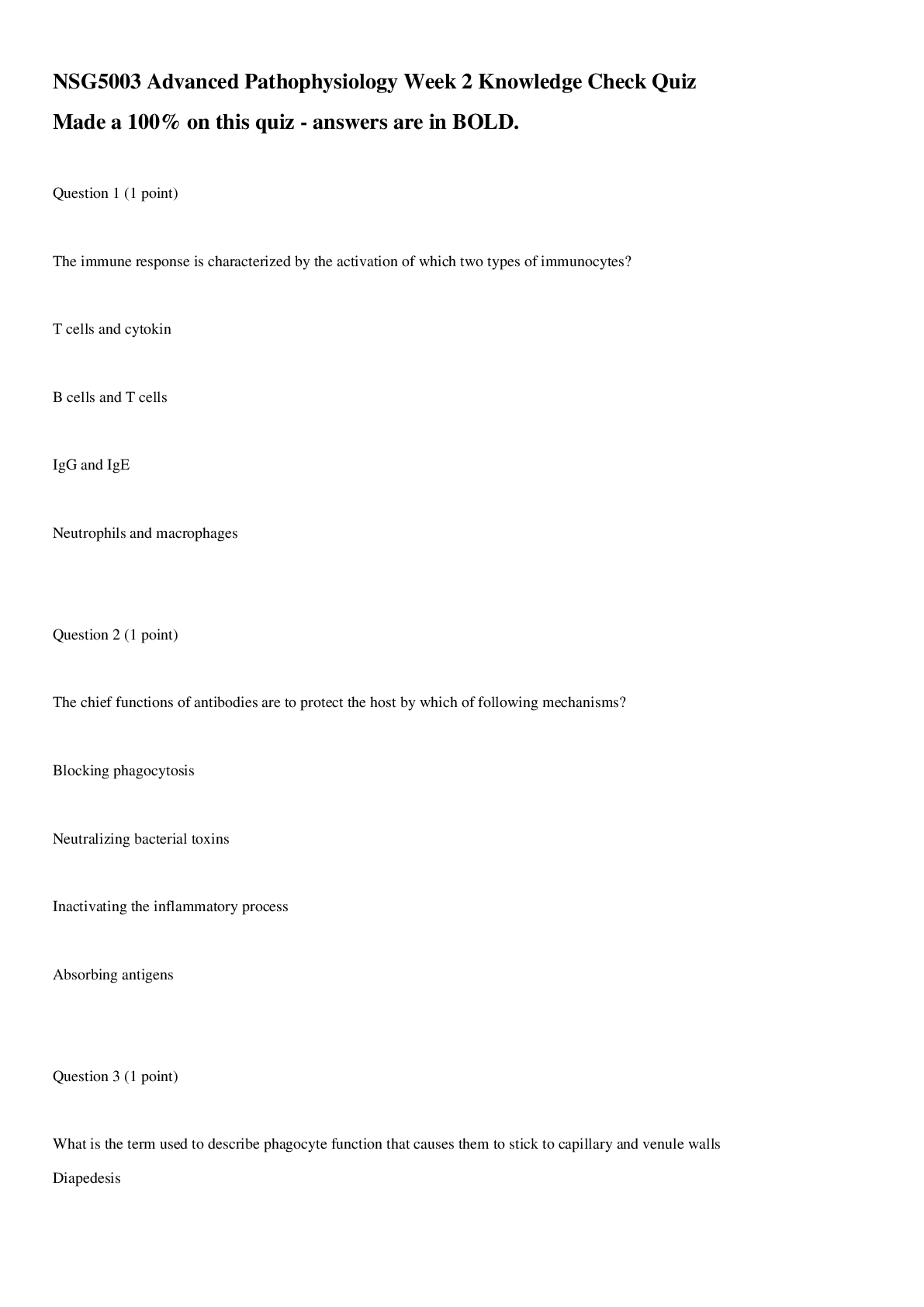
.png)
